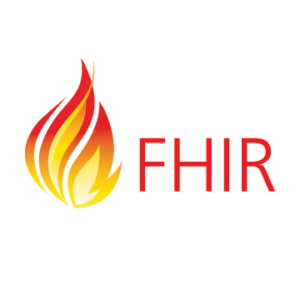The AEGIS team had the pleasure of attending the HL7 Patient Access API Implementation Virtual Event, held August 17-19th, 2020. The Implementation Event was designed for organizations looking to focus on the technical and functional requirements for Patient Access APIs by payers in the context of CMS/ONC final rule and implementation deadlines. HL7 Implementation and Connectathon events highlight a main tenet of interoperability… the need for continuous testing.
The ONC 21st Century Cures Act and CMS Interoperability & Patient Access final rules lay out a bold vision. These rules describe a future where systems use HL7’s FHIR (Fast Healthcare Interoperability Resources) for electronic data exchange to make accessing and sharing healthcare data faster and easier than ever. They also prepare healthcare payer and provider systems to afford greater access for patients to their own healthcare information by defining a standard minimum of data that must be made available.
 FHIR Accelerators like the DaVinci Project and the CARIN Alliance have produced Implementation Guides that are now the model for interactions like Consumer Directed Payer Data Exchange and Provider Directory look-ups. As Health IT system developers implement the FHIR standard, they must shift their focus from building to meet their immediate interface requirements to building to conform to the interoperability standard. The FHIR specification provides a roadmap to interoperable data exchange, so coding to the specification means all of the supported system interactions will work with other systems claiming conformance to the same standard. The FHIR Accelerators have worked hard to document the requirements in Implementation Guides and test scripts so that developers can build interoperable systems that meet ONC and CMS rules.
FHIR Accelerators like the DaVinci Project and the CARIN Alliance have produced Implementation Guides that are now the model for interactions like Consumer Directed Payer Data Exchange and Provider Directory look-ups. As Health IT system developers implement the FHIR standard, they must shift their focus from building to meet their immediate interface requirements to building to conform to the interoperability standard. The FHIR specification provides a roadmap to interoperable data exchange, so coding to the specification means all of the supported system interactions will work with other systems claiming conformance to the same standard. The FHIR Accelerators have worked hard to document the requirements in Implementation Guides and test scripts so that developers can build interoperable systems that meet ONC and CMS rules.
Given the great strides made in the FHIR community to mature the specification, testing is more important than ever. To achieve true interoperability in healthcare, rigorous testing of the systems being used to provide the data is required at every stage. Testing ensures adherence to the HL7 FHIR specification and the Implementation Guides being built by industry collaborations to ensure systems work gracefully together to exchange health information. Testing ensures system developers build to meet certification requirements. Testing mitigates risk and cost associated with software development that has to be re-engineered if it misses its mark. Integrating testing into every aspect of development to ensure conformance to interoperability standards saves Health IT system vendors time and money.
The FHIR specification is meant to be a constantly evolving standard that matures along with the industry. Constant maturity can present strife for developers who may have coded to the FHIR specification only to find that a newly balloted version has been released. Test Driven Development provides the testing toolbox that can help developers meet the challenges of an ever-changing interoperability specification. Testing the existing system against the new specification requirements easily identifies gaps in functionality so that developers can quickly resolve their code for full compatibility and move on.
In August at the Open Access API event, participants used AEGIS Touchstone FHIR Testing platform to run basic FHIR tests and tests built for specific Implementation Guides such as DaVinci Provider Directory. Within just a few days, system developers were able to gain the feedback they need to adjust their code and meet federal interoperability requirements. The platform also facilitates evaluation of peer-to-peer tests to ensure the standard is working for all. If you are looking for help learning to use FHIR efficiently, consider exploring the Touchstone Platform to accelerate your efforts.



One thought on “The Importance of Testing HL7® FHIR®”